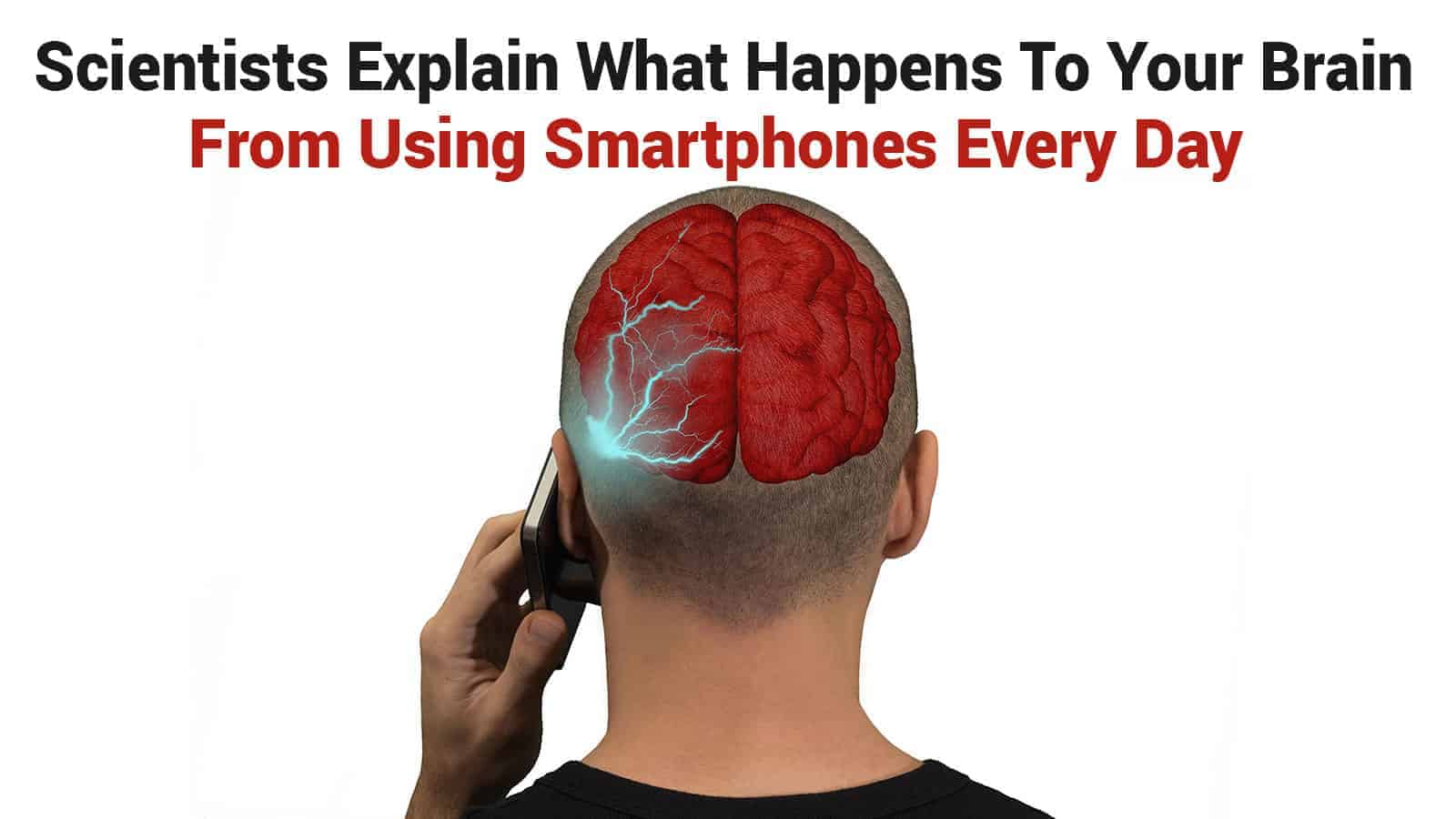The headline sounds like something out of a science fiction movie. “Using smartphones causing ‘horn-like’ bone growth in young people.”
Really? That’s what it’s come to? So, children develop horns because they can’t put down their phones?
Let’s “pump the brakes” a bit. What’s going on?
“We hypothesize EEOP (enlarged external occipital protuberance) may be linked to sustained [abnormal] postures associated with the emergency and extensive use of hand-held … technologies.”
Oh, okay. Thanks, I guess?
Allow us: a researching team is reporting that there’s the bony growth – an external occipital protuberance (EOP) – “emanating” from a prominent lower rear area of the skull.
In other words, the authors believe that we’re growing horns in our skull (technically, bone spurs) because of too much time spent staring down at our digital screens.
Can this possibly be true?
While a couple of other scientists are refuting the duo’s claims citing a lack of presented evidence, the study’s findings nonetheless warrant investigation and, if necessary, appropriate action in the form of public health education.
Let’s dig a little deeper and see what we can find out.
The Study
“Our findings raise a concern about the future musculoskeletal health of the young adult population and reinforce the need for prevention intervention through posture improvement education.” ~ Shahar, D. & Sayers, M.G.
(Note: this section contains scientific definitions to report the study as is. We include a simpler explanation below the study.)
The development of enthesophytes – bony filaments that arise from ligaments – was once considered extremely rare in young adults. However, according to Dr. David Shahar, Ph.D. and Associate Professor Mark Sayers at the University of the Sunshine Coast in Queensland, Australia, this is no longer the case.
Shahar is a licensed chiropractor. He first shared these findings after examining a series of x-rays of patients aged 18 to 30.
Here’s a breakdown of the study on smartphones and these growths.
Evidence: It includes radiographs from 218 patients, ranging in age from 18 to 30 years.
- Included images clearly show a bony, spur-like protrusion originating from the bottom-rear of the skull.
- Protrusion size had an inverse relationship with age.
- Incidence: 41 percent of young adult patients reportedly had the protrusion.
- EEOP (enlarged external occipital protuberance) was found in 33 percent of Shahar’s patients across age groups.
Risk factors: The condition’s Predictive factors are forward head protraction (FHP), age, and sex.
- FHP or “poking chin” is an abnormal posture in which the head “shifts anteriorly” from center gravity.
- The FHP posture places pressure on other muscles attached to the cervical spine as the body attempts to hold the head vertical for straight-ahead vision.
- Males are nearly six times as likely as females to have the ‘condition.’
- Older patients exhibited smaller enthesophyte (‘bone spur’) size than younger patients. (“…a conundrum,” says the team, “as the frequency and severity of degenerative skeletal features in humans are associated typically with aging.”)
Cause(s):
The physiological catalyst of enthesophyte growth is mechanical load: skeletal resistance to the force created when part(s) of the body. And in this case, the skull and the surrounding areas are situated in a maladaptive position.
- It is known that the body will catalyze enthesophytes in an attempt to counteract this skeletal shift in force.
- Ultimately, it is this mechanical loading phenomenon that the authors hypothesize produces a bodily adaptation in the form of a “horn” on the back of the skull of young adults.
Study Conclusions:
The authors believe there exists sufficient evidence (“a direct link”) between (a) the “aberrant” mechanical loading caused by mobile device use, and (b) the anomalous growth rate of EEOP instances in young adults.
Because of this alleged link, the authors cite reservations about “the future musculoskeletal health” of young adults and call for appropriate intervention and preventing using posture improvement education.
A Quick Summary
Please forgive the scientific mumbo-jumbo as derived from the study. Confused? No, don’t worry. Here’s a point-by-point analysis in simpler, more readable terms.
- #1: The authors suggest that young adults are growing a bony-like projection at the back of their skull. Images appear to confirm this suggestion.
- #2: A key piece of evidence is the more frequent occurrence of this condition in younger people than older.
- #3: Because of point #2, the authors suggest that these growths are possibly triggered by the frequent, sustained head ‘tilting’ when using a digital device. Of course, these include a smartphone or a tablet.
- #4: If the presented correct and authentic data and images, it could signify a potential evolutionary adaptation of the human form.
- #5: The research team suggests that these findings are a “concern” and that the muscular and skeletal health of young adults may necessitate educating young people on these effects through posture education.
“Text Neck”
“Text neck” is a term coined by the American chiropractor Dr. D.L. Fishman. The term describes a collection of symptoms that arise from the tilting of the head while staring at handheld devices over a prolonged period.
There is a medical term to describe such a condition: anterior head syndrome. Experts say that the condition is becoming much more frequent due to the rapid adoption and use of smartphones all over the world.
Symptoms of text neck include:
- Stiff neck: Soreness of the neck and limited maneuverability caused by excessive mobile device use.
- Pain: ‘A dull or throbbing pain in and around the neck area
- Radiating pain: Pain that starts in the neck and extends downwards to the arms and shoulders.
- Weakness: Muscle weakness of the shoulder muscles, including the external rotators, rhomboids, and trapezius muscles.
- Tension headache: Caused by the tightening of the sub-occipital eye muscles
- Other reported symptoms of text neck include cervical spine compression, early-onset arthritis, loss of lung capacity, and spinal degeneration.
- Digital adoption: Some perspective
Some Eye-opening Statistics About Smartphones
Most of the problems related to mobile devices really come down to three points: (1) the sheer number of smartphone users, (2) the rapid adoption of smartphones and other mobile devices, and (3) the extensive use thereof. Here are some statistics:
- Total number of smartphone users: ~ 3.3 billion (B)
- Average time spent on mobile devices per day (young adults): 4 hours
- Percentage of people with a smartphone in:
- 2008: 17
- 2018: 78
- Percentage of people with a tablet in:
- 2008: 2
- 2018: 58
Final thoughts: Is it time for a serious discussion?
“…we are still in the early stages of the digital revolution, and new media experiences such as virtual and augmented reality are just around the corner. Perhaps now, more than ever, we should consider what this might mean for the children who will at the forefront of this new digital era.” ~ Romeo Vitelli, Ph.D.
Technology, including sophisticated mobile devices, can be a benefit to society. They disseminate knowledge and allow easy communication. Additionally, they can be great for passing the time.
Nevertheless, it’s plain to see that our young adults have a serious problem with putting down the smartphones. Now, there’s some possible evidence to suggest that we may be adapting to this digital addiction by ‘growing horns’ in our heads.
Really? That’s what this has come down to?
Multiple studies have confirmed the damaging psychological and neurological effects of digital addiction. But again, we didn’t’ really need a bunch of scientists to tell us something that should be intuitively grasped: staring down at your smartphone or tablet for hours on end is not good.
It’s not good for your:
- Eyes
- Brain
- Spine
- Head
- Cognition
- Mental well-being
- Sleep habits
As far as the issue at hand: young adults growing so-called ‘horns’ on their heads, who knows? It sounds outrageous, but then again, so is the fact that there are actual treatment centers and treatment programs to curb internet addiction and digital addiction.
Is it time for a serious discussion? What should we do, if anything?
We’re all adults here. It is pointless to tell any grown man or woman what to do with their phones, health, or anything else for that matter.
But what about children? The tech-addicted young adults of today are those that we didn’t think twice to giving a smartphone or tablet yesterday.
Is this necessary? Do kids really need to have a smartphone?
If the answer is ‘yes,’ what can be done about teaching each child about responsible device use?
The first step may be to sit down to explain the concept of a “tool” to your child. Then, help your kids understand how that fancy device you placed into their eager hands is just that.















 Community
Community

